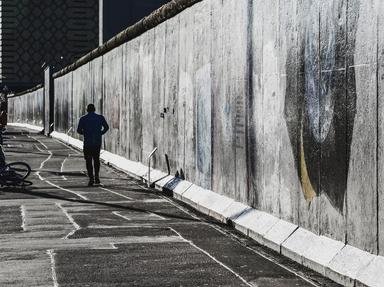Quiz Answer Key and Fun Facts
1. In 1947, under Clement Attlee's government, Britain began its nuclear plans in earnest. A team of scientists led by William G Penney began work on Britain's first atomic bomb. In October 1952, Britain conducted its first nuclear test, codenamed Operation Hurricane, at a remote location. Where did Operation Hurricane take place?
2. 'Attack warning RED! Attack warning RED!' This is the message you would have heard in the UK during the Cold War, had a nuclear attack on the country occurred. The United Kingdom Warning and Monitoring Organisation (UKWMO), founded in 1957, used a communications system to warn the public of an impending nuclear strike. What was the code name of this system?
3. Nuclear weapons have had many critics and opponents over the years. One of the most notable groups opposing nuclear weapons in Britain was founded in 1957, inspired by an article written for 'The New Statesman' by the playwright J.B. Priestley. Which group was this?
4. In 1980, the British government conducted an exercise assessing the possible effects of a nuclear attack, in which 131 nuclear weapons would fall on Britain, with an output of around 250 megatons and an estimated 29 million deaths. What was the name of this exercise?
5. Since the introduction of nuclear weapons, many films have been released all over the world, showing the potential, disastrous effects a nuclear war could have on humanity, both on a national and international scale. In 1965, one such film, made for television, was deemed so horrific by the BBC at the time that they refused to show it. Which film was this?
6. In what year was the 'Protect and Survive' pamphlet published in Britain, as part of the government's public information series of the same name?
7. In 1981, which RAF base became a site of a nineteen-year anti-nuclear protest by a women's peace camp, after cruise missiles were deployed there?
8. A NATO exercise, Able Archer, actually came close to causing an international nuclear incident between the US/UK and the Soviet Union in 1983 after the Soviet Union mistook it for a genuine threat.
9. In December 1962, the Polaris nuclear programme began in Britain, named after the submarine-launched Polaris missile provided by the US under the Nassau Agreement. Work on the submarines began in 1964, with the first Polaris patrols in 1968. By 1996, however, the Polaris system had been completely retired in Britain and replaced by a new system of nuclear missiles. Which missile system was this?
10. Whenever a new Prime Minister takes office in Britain, they must write four identical 'letters of last resort', to only be opened in the event of a nuclear attack. To whom are these letters distributed?
Source: Author
Kankurette
This quiz was reviewed by FunTrivia editor
bloomsby before going online.
Any errors found in FunTrivia content are routinely corrected through our feedback system.

